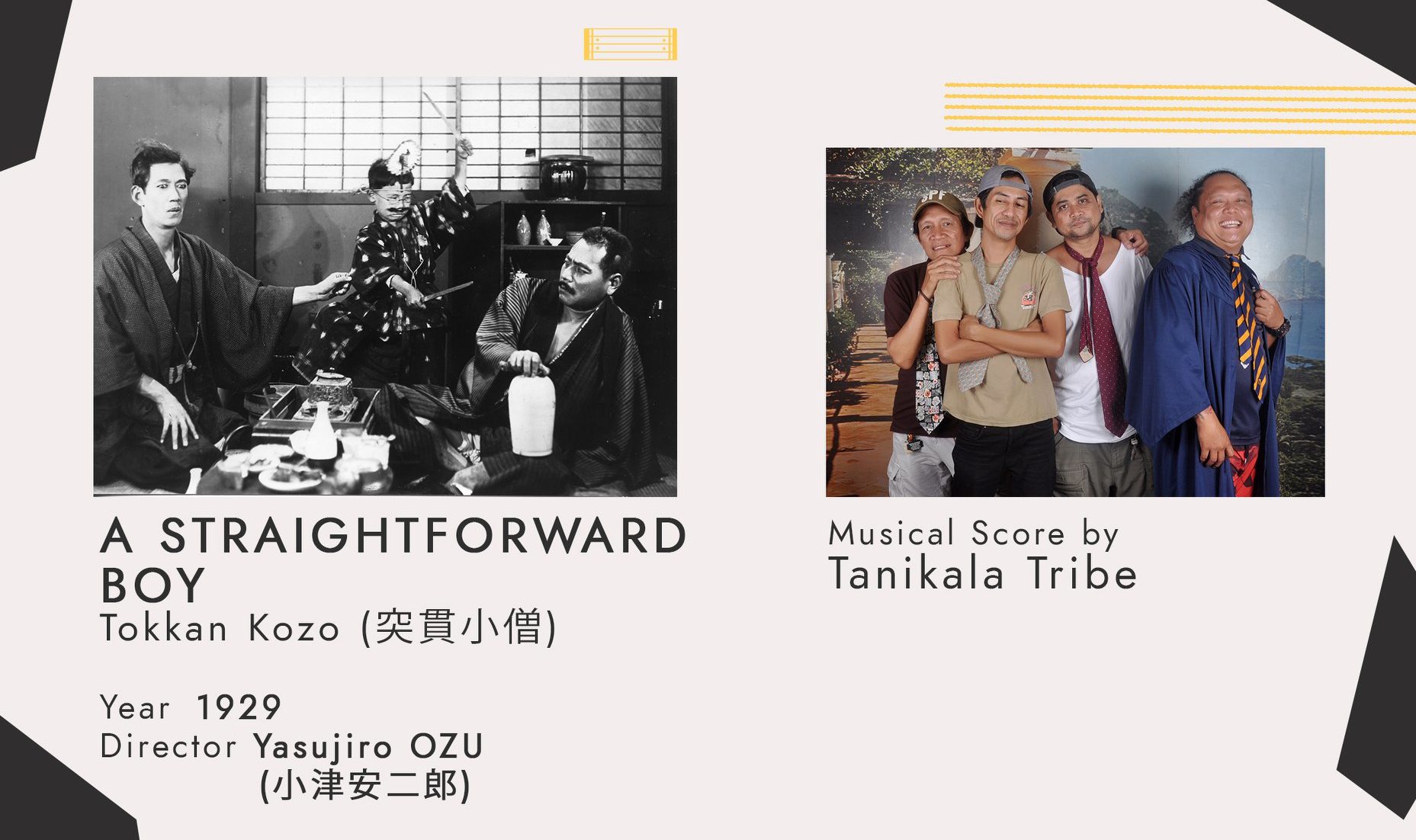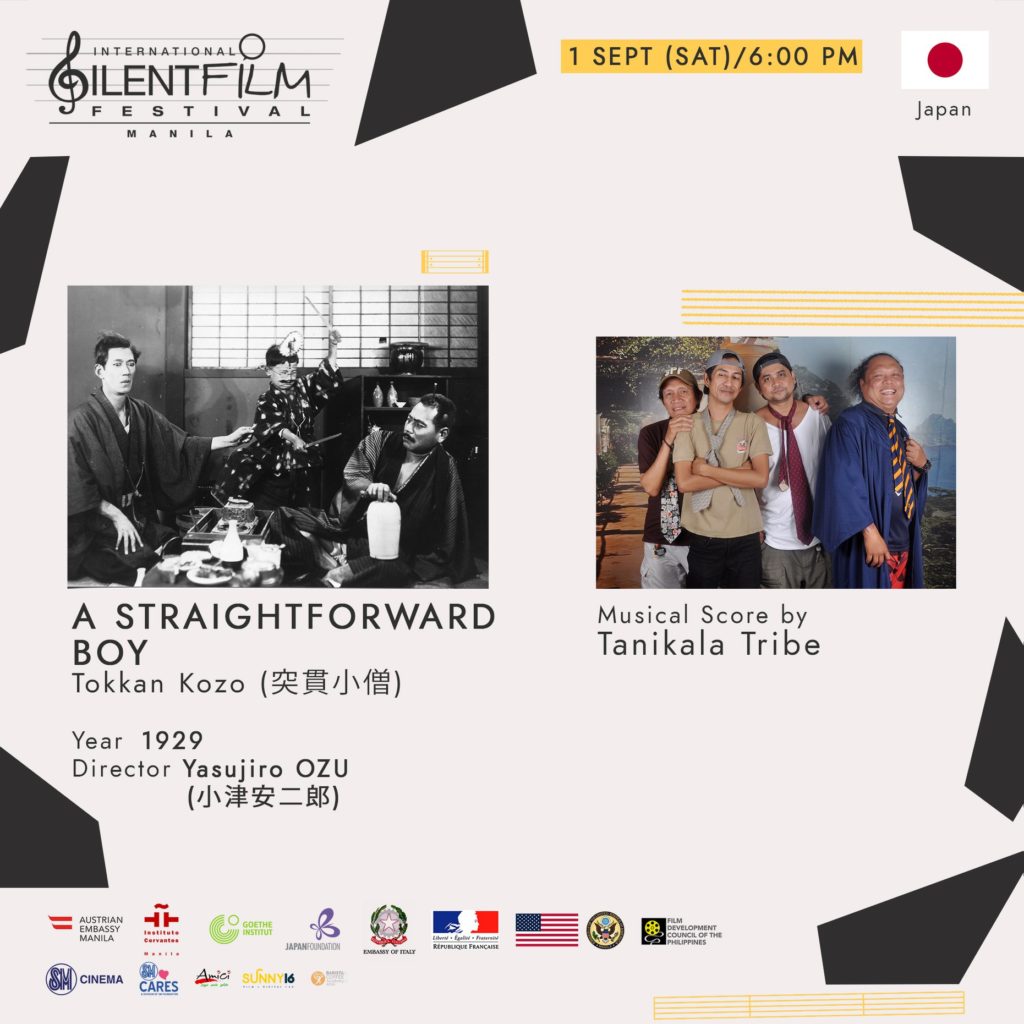The entry from Japan in this year’s International Silent Film Festival Manila (ISFFM)–influential director Yasujiro Ozu’s A Straightforward Boy–has been emerging for the last couple of decades in fragments. Previously believed to be lost, the film was discovered in 1988 and again in 2016–the latter, being the most complete version to date, and which screened at the ISFFM on September 1. Originally 38 minutes long, this version ran for 19 minutes.
Ozu, who has long been considered as a cinematic master in Japan, is more famous for movies such as “I Was Born, But…”, “Late Spring,” and “Tokyo Story,” but A Straightforward Boy definitely showcases early sediments of his greatness.
The plot is strikingly simple–it tells of a boy who gets kidnapped and becomes, as it turns out, more than they signed up for. Tetsubo, the little boy, drives his kidnappers mad, to the point that the story subsequently becomes the kidnappers’ attempts to give him back. Based on the O. Henry short story, “The Ransom of Red Chief,” the film relies on the dynamic between boy and kidnapper (played by Tomio Aoki who would later come to more renown in “I Was Born, But…” and another Ozu collaborator, Tatsuo Saito, respectively) to underscore themes like the roles of adults and children in this period in Japan and decorum and behavior in Japanese culture.
One theme that was quite apparent in the film was silences–unspoken desires, frustrations, and emotions that are strongly tied to Japanese traditions, especially in those times. This is evident, for example, in the boy’s subdued provocations, or in the depictions of disciplining children. An uncomplicatedly fleshed out plot rather forces its audiences to read between the lines–prompting the realization that most of the characters’ motivations are shaped by their own repressions.
Funny thing that the film is entitled “A Straightforward Boy”. In 19 minutes, it is in every respect a silent comedy–simple, cheeky, and actually worthy of a few laughs. However, it is also a feat of satire without exaggeration, Ozu’s own critique of 1920’s Japan and all its customs. It is a shame that we only have 19 minutes of this film; the storytelling and comedic timing could certainly unfold into a full-length film and still keep its viewers enticed. Considering the brilliance of this rediscovered gem, perhaps comedies these days should endeavor to be more straightforward.
INQPOP/Megan Flores




